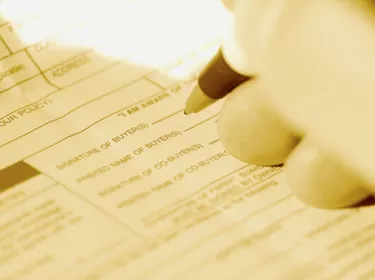
The IRS updated Form W-4 in 2020, based on changes made in the Tax Cut and Jobs Act, which went into effect in 2018. The new W-4 makes it easier to determine your withholding tax, but you no longer claim allowances.
This means that single persons no longer have to choose between zero and one allowance. Reviewing how to fill out the new W-4 – and if you even need to – will help you reduce the chance you underpay or overpay your taxes during the year.
Video of the Day
Video of the Day
Changes to Form W-4
Prior to 2020, single persons with no dependents could claim zero or one allowance, explains TurboTax. Claiming zero allowances increased the amount of taxes taken out of each paycheck, which some people (e.g., those with second incomes) wanted to do to avoid underpaying their taxes. Claiming one allowance (yourself) lowered your withholding tax. With the new W-4, you do not claim allowances, but you can claim dependents.
The New W-4 Sections
The new W-4 has four parts: Personal Information, Multiple Jobs or Spouse Works, Claim Dependents and Other Adjustments. The first section includes your name, address, Social Security number and filing status (in this case, single). If you're claiming head of household, check that box.
In Section 2, you'll fill out information relating to a second job you hold and/or your spouse's work situation. You can skip Section 3 if you're not claiming any dependents. If you have extra income (not from jobs), are claiming deductions besides the standard deduction or want extra taxes withheld, fill out this section.
Read More: Form 1040: What You Need to Know
Filling Out Your W-4
Filling out the new W-4 is easy if you just follow the directions on the form. In addition to the four sections on the first page, you'll want to fill out the Multiple Jobs Worksheet and the Deductions Worksheets, both of which you keep for your records. The final page of the instructions includes information about your tax brackets, based on your filing status and income.
Section 1 is easy – fill in your name, address, Social Security number and filing status. For Section 2, if you hold multiple jobs, the IRS recommends that you use its Tax Withholding Estimator to help determine how much tax you should have withheld from your paychecks.
As a single person claiming no dependents, you can skip Section 3. Next, fill in one, two or three of the lines in Section 4, depending on whether or not you have non-job-related income (such as from a rental property), are claiming deductions other than the standard deduction or want extra taxes withheld from your paychecks.
Make sure to sign and date the form. Have your employer complete the form by including its name and address, your first date of employment and the company's Employer Identification Number. In most cases, your employer will fill out your W-4 using the information you give them. You do not need to update a W-4 you filled out before 2020 if your status has not changed since you originally completed the form.